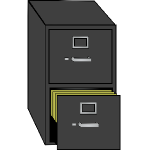 My sister recently “lost” an entire folder that was supposed to be on her PC’s desktop.
My sister recently “lost” an entire folder that was supposed to be on her PC’s desktop.
(The fact that the folder turned out to be on her desktop after all, but had moved — and her desktop was simply too cluttered for her to be able to tell — is another story entirely.)
(We’re also not going to discuss the fact that she’s still running Windows, despite the combined efforts of myself and our Dad to convert her to — or convince her to at least try — Linux.)
Instead, what we’re focusing on here is how we found the folder, and how you can find any files or folders that have up and walked away… or (more likely) got put somewhere and you forget where.

 When a new file system (ie. removable media device) is introduced in Windows, it is automatically mounted and assigned a drive letter, from which it is accessible until it is removed. Microsoft has us spoiled.
When a new file system (ie. removable media device) is introduced in Windows, it is automatically mounted and assigned a drive letter, from which it is accessible until it is removed. Microsoft has us spoiled. Welcome back to the third and final (for now) part of our series on file management.
Welcome back to the third and final (for now) part of our series on file management. You may, by this point in time, have some inkling of my proclivity for all things organization and order.
You may, by this point in time, have some inkling of my proclivity for all things organization and order. How do you know where to find files on your computer?
How do you know where to find files on your computer? A computer, contrary to popular opinion, does not actually have a mind of its own.
A computer, contrary to popular opinion, does not actually have a mind of its own.